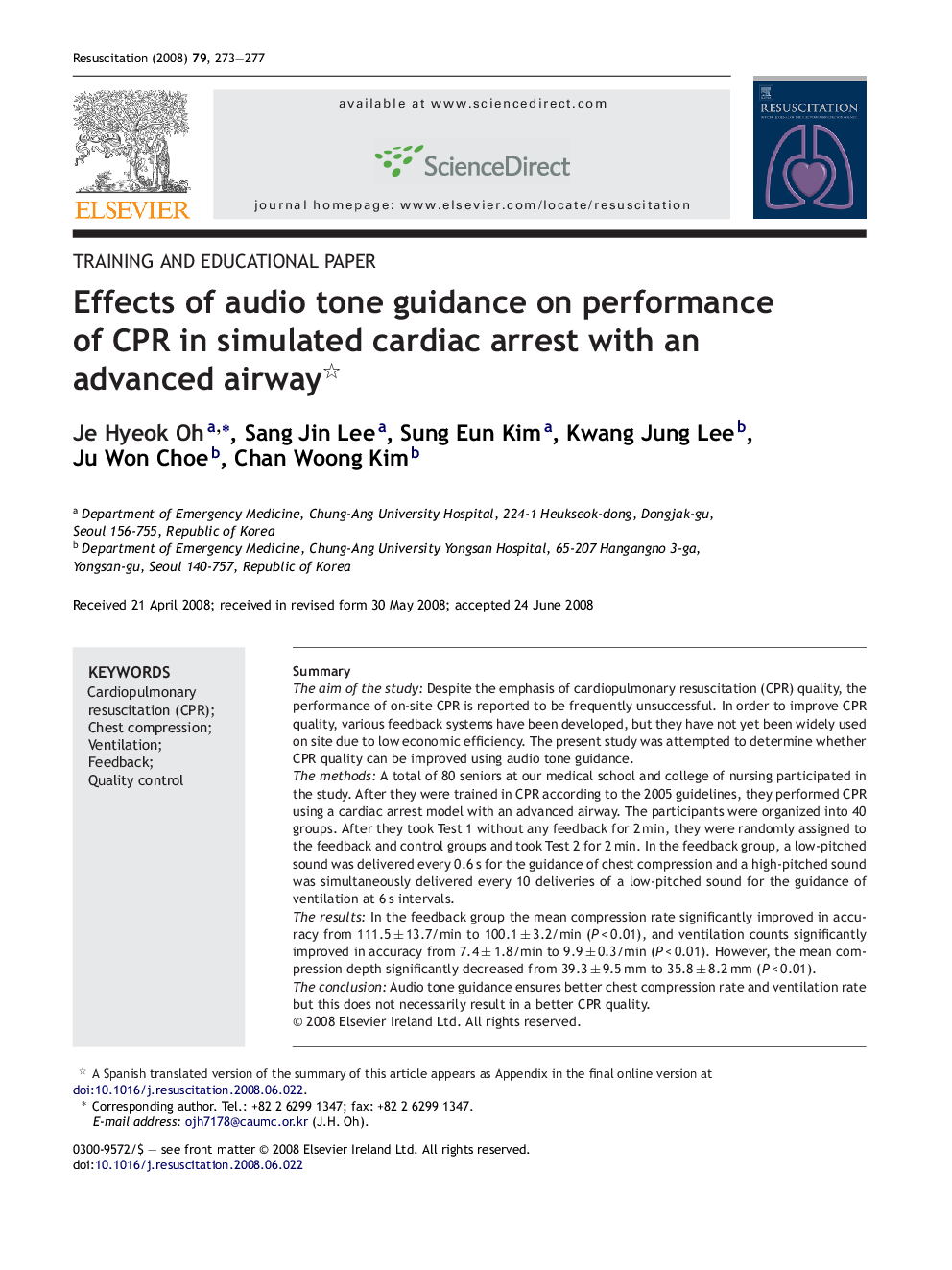| Article ID | Journal | Published Year | Pages | File Type |
|---|---|---|---|---|
| 3011306 | Resuscitation | 2008 | 5 Pages |
SummaryThe aim of the studyDespite the emphasis of cardiopulmonary resuscitation (CPR) quality, the performance of on-site CPR is reported to be frequently unsuccessful. In order to improve CPR quality, various feedback systems have been developed, but they have not yet been widely used on site due to low economic efficiency. The present study was attempted to determine whether CPR quality can be improved using audio tone guidance.The methodsA total of 80 seniors at our medical school and college of nursing participated in the study. After they were trained in CPR according to the 2005 guidelines, they performed CPR using a cardiac arrest model with an advanced airway. The participants were organized into 40 groups. After they took Test 1 without any feedback for 2 min, they were randomly assigned to the feedback and control groups and took Test 2 for 2 min. In the feedback group, a low-pitched sound was delivered every 0.6 s for the guidance of chest compression and a high-pitched sound was simultaneously delivered every 10 deliveries of a low-pitched sound for the guidance of ventilation at 6 s intervals.The resultsIn the feedback group the mean compression rate significantly improved in accuracy from 111.5 ± 13.7/min to 100.1 ± 3.2/min (P < 0.01), and ventilation counts significantly improved in accuracy from 7.4 ± 1.8/min to 9.9 ± 0.3/min (P < 0.01). However, the mean compression depth significantly decreased from 39.3 ± 9.5 mm to 35.8 ± 8.2 mm (P < 0.01).The conclusionAudio tone guidance ensures better chest compression rate and ventilation rate but this does not necessarily result in a better CPR quality.
